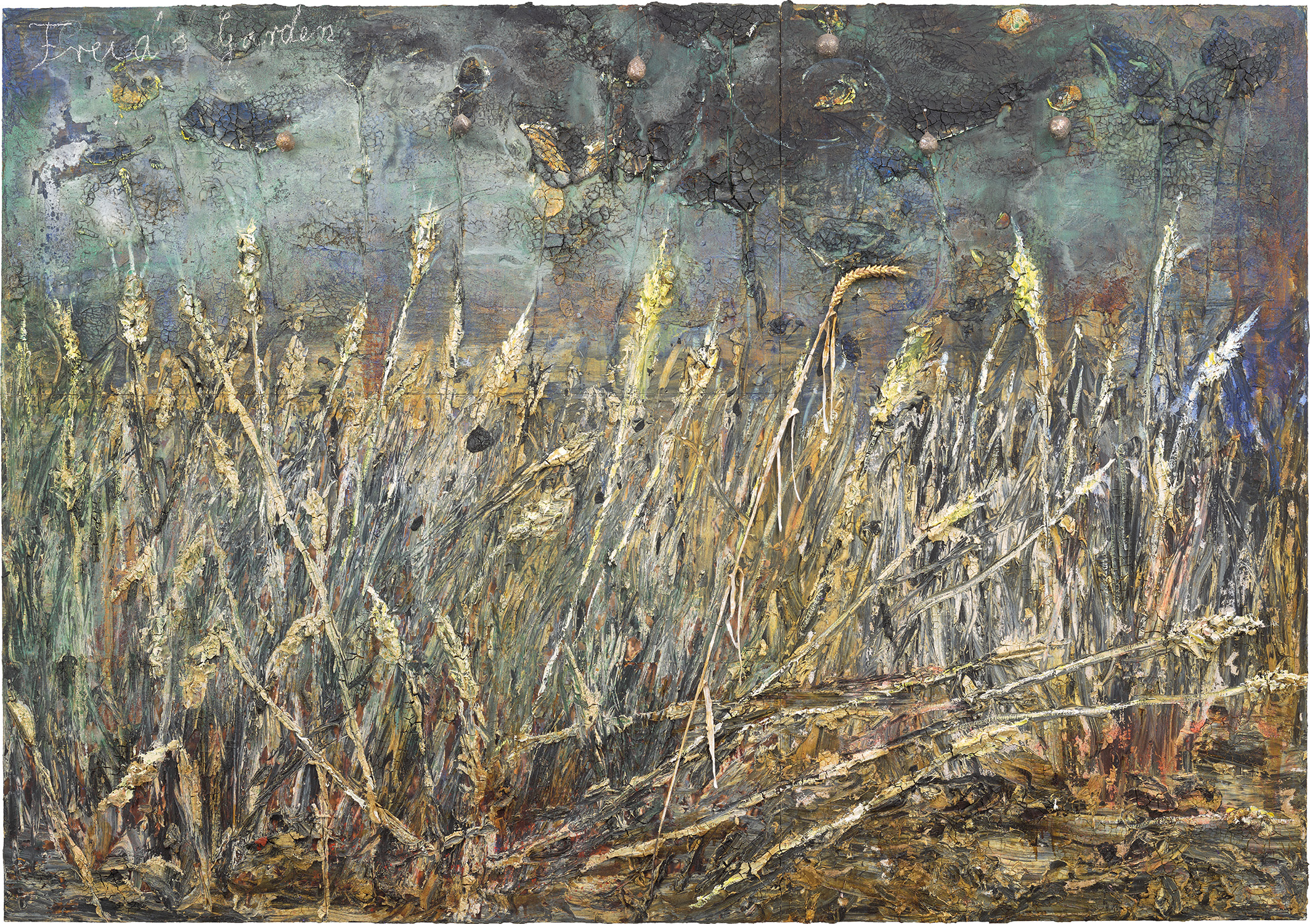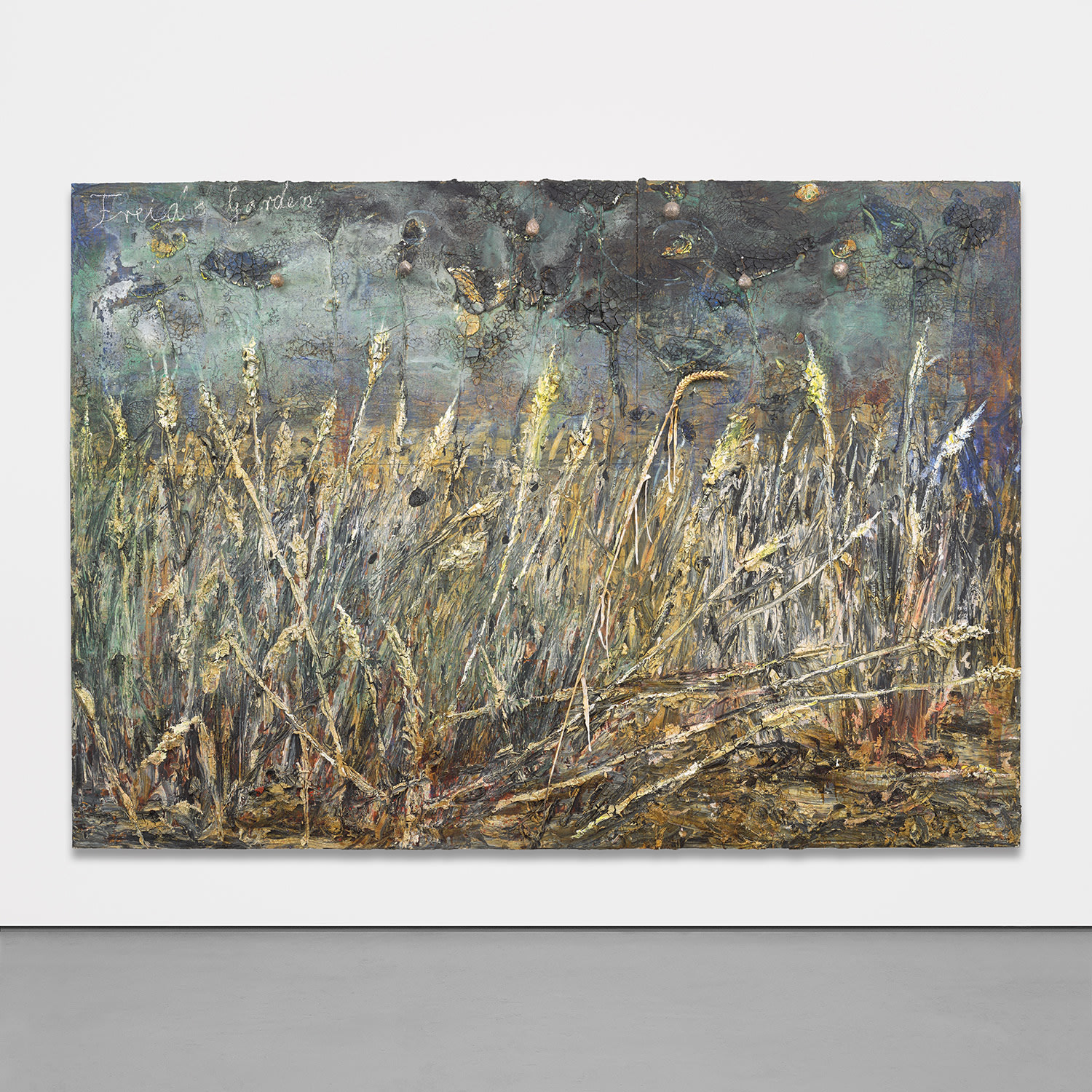



30
Anselm Kiefer
Freia's Garden
titled 'Freia's Garden' upper left
acrylic, emulsion, oil, shellac, metal, plaster, gold leaf, silver leaf, polystyrene and sediment of electrolysis on photograph mounted on canvas
340 x 470 x 10 cm (133 7/8 x 185 x 3 7/8 in.)
Executed in 2013.